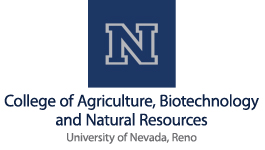Team:Nevada/Transgenic Plants
From 2010.igem.org
| Line 22: | Line 22: | ||
| - | < | + | <p>'''Technological Advances from Genetically Engineered Plants''' |
| - | < | + | <br> |
| + | Since the initial development of Agrobacterium transformation systems, many plant species including tobacco, tomato, potato, rice, soybean, mint, melon, cucumber, pine and poplar trees, and many others have been transformed using this ingenious bacterial vector. Important traits have been engineered into plants including pest and weed resistance, increased nutritional value, environmental stress tolerance, the production of pharmaceutical and industrial proteins, and the production of bioactive secondary chemical compounds. Our ability to genetically engineer plants has revolutionized agriculture by increasing crop yields while drastically decreasing the application of herbicides and pesticides. This technology is necessary to allow farmers to produce sufficient food for a growing global population. Furthermore, plants are currently being engineered to produce fuel and chemical alternatives to petroleum based products. Because plants are net consumers of atmospheric carbon dioxide, they are currently being seen as a means to sequester greenhouse gases while at the same time replacing petroleum and coal as chemical feedstocks. | ||
| - | + | cont...</p> | |
| - | + | ||
| - | + | ||
Revision as of 18:15, 26 October 2010
Transgenic Plants: into the Wild
Technological Advances from Genetically Engineered Plants
Since the initial development of Agrobacterium transformation systems, many plant species including tobacco, tomato, potato, rice, soybean, mint, melon, cucumber, pine and poplar trees, and many others have been transformed using this ingenious bacterial vector. Important traits have been engineered into plants including pest and weed resistance, increased nutritional value, environmental stress tolerance, the production of pharmaceutical and industrial proteins, and the production of bioactive secondary chemical compounds. Our ability to genetically engineer plants has revolutionized agriculture by increasing crop yields while drastically decreasing the application of herbicides and pesticides. This technology is necessary to allow farmers to produce sufficient food for a growing global population. Furthermore, plants are currently being engineered to produce fuel and chemical alternatives to petroleum based products. Because plants are net consumers of atmospheric carbon dioxide, they are currently being seen as a means to sequester greenhouse gases while at the same time replacing petroleum and coal as chemical feedstocks.
cont...

| 
| 
| 
| 
|
|---|
 "
"
